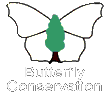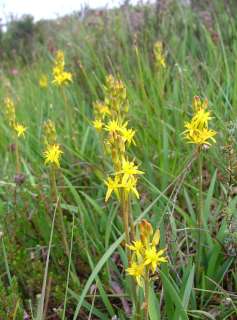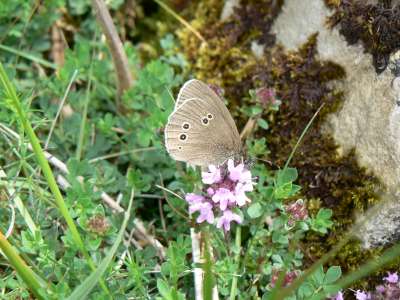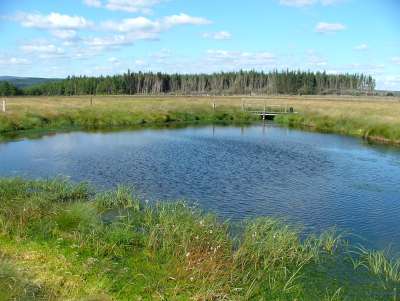
| Butterfly Conservation | |
| saving butterflies, moths and their habitats |
 |
|
|||
| North East England Branch | ||||
|
The Border Mires The Border Mires is the name given to a collection of peat bog sites in and around Kielder Forest in Northumberland. This complex is part of what was once the largest continuous tract of active blanket bog across northern England. Much of the original mire has been lost to coniferous tree planting over the last hundred years. Fortunately significant areas of the original bog remain. The Border Mires began to form around 12,000 years ago after the Ice Age, when the last glaciers retreated from Northern Britain. Hollows scoured out by the glaciers became water filled. Water plants in the lakes gradually filled in the lakes with organic material when they died. The cool, wet conditions meant they did not decompose completely but formed peat. Over thousands of years this peat has built up and in some places the mires are now more than 10 metres deep. The Border Mires still represent some of the best active blanket bogs in Europe and are therefore of great importance as a wetland habitat in the North East. 
Bog Asphodel. Photo: J Wallace. The Border Mires are particularly important for their colonies of Large Heath butterflies. This is one of our few wetland species of butterfly, breeding in upland blanket bogs where cottongrass is found. About 75% of the English colonies of this rare species are found in Northumberland. 
Other butterflies found include ringlet and small heath. The Northern Eggar moth is also found, together with a variety of dragonflies. Ringlet. Photo: David Stebbings Some Border Mires Sites If you visit these sites it is very important to stay on the boardwalks as walking on the mire itself can be treacherous and furthermore the bog vegetation is extremely sensitive to trampling. Falstone Moss - A Northumberland Wildlife Trust reserve, south of Kielder Water. Grid Reference NY708860. A path leads from the main road, just west of the dam, up a hill to a board walk on the moss. Large Heath, Ringlet, Northern Eggar. Bellcrag Flow - A Northumberland Wildlife Trust reserve. Grid Reference NY775725. This involves a three mile walk on forest tracks from the main road. There is a board walk onto the mire. Notable for Large Heath and its variety of dragonflies. 
View of Falstone Moss. Photo: J Wallace. |
| Copyright Butterfly Conservation © 2008 North East England Branch |
| Privacy and Copyright Statement |
| Butterfly Conservation: Company limited by guarantee, registered in England (2206468) Registered Office: Manor Yard, East Lulworth, Wareham, Dorset, BH20 5QP Charity registered in England & Wales (254937) and in Scotland (SCO39268) |